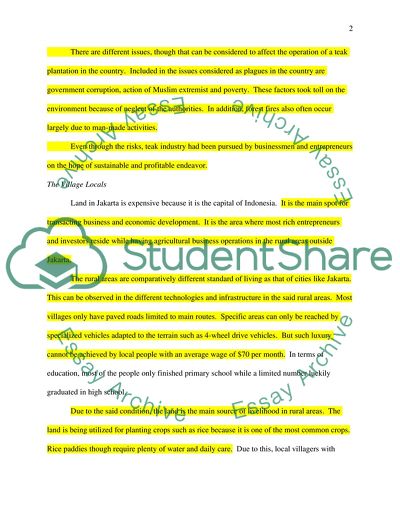Cite this document
(Environmental Sustainability in the Teak Plantation Industry Report Example | Topics and Well Written Essays - 1750 words, n.d.)
Environmental Sustainability in the Teak Plantation Industry Report Example | Topics and Well Written Essays - 1750 words. https://studentshare.org/environmental-studies/1729149-geography-environmental-sustainability
Environmental Sustainability in the Teak Plantation Industry Report Example | Topics and Well Written Essays - 1750 words. https://studentshare.org/environmental-studies/1729149-geography-environmental-sustainability
(Environmental Sustainability in the Teak Plantation Industry Report Example | Topics and Well Written Essays - 1750 Words)
Environmental Sustainability in the Teak Plantation Industry Report Example | Topics and Well Written Essays - 1750 Words. https://studentshare.org/environmental-studies/1729149-geography-environmental-sustainability.
Environmental Sustainability in the Teak Plantation Industry Report Example | Topics and Well Written Essays - 1750 Words. https://studentshare.org/environmental-studies/1729149-geography-environmental-sustainability.
“Environmental Sustainability in the Teak Plantation Industry Report Example | Topics and Well Written Essays - 1750 Words”. https://studentshare.org/environmental-studies/1729149-geography-environmental-sustainability.


